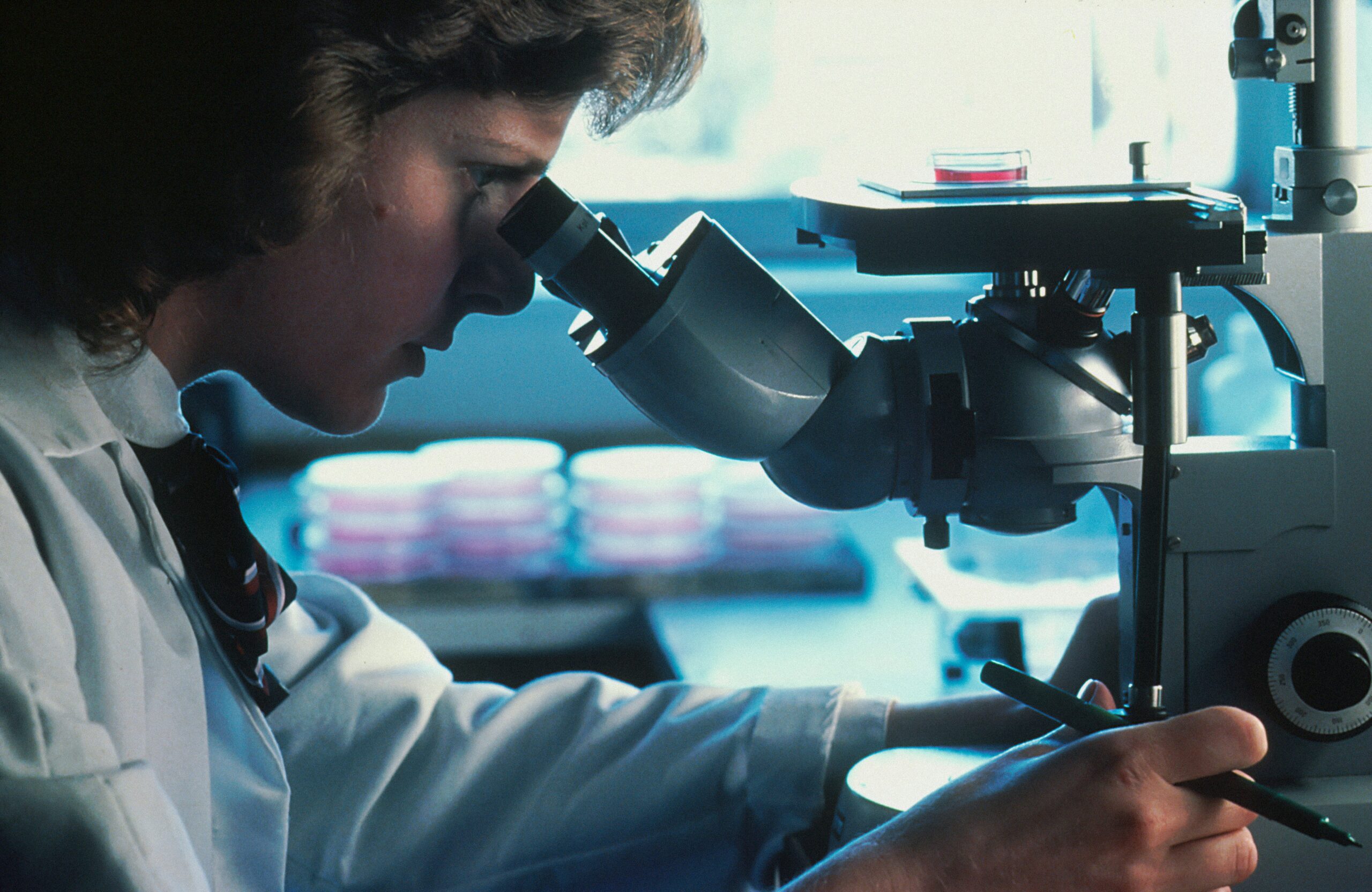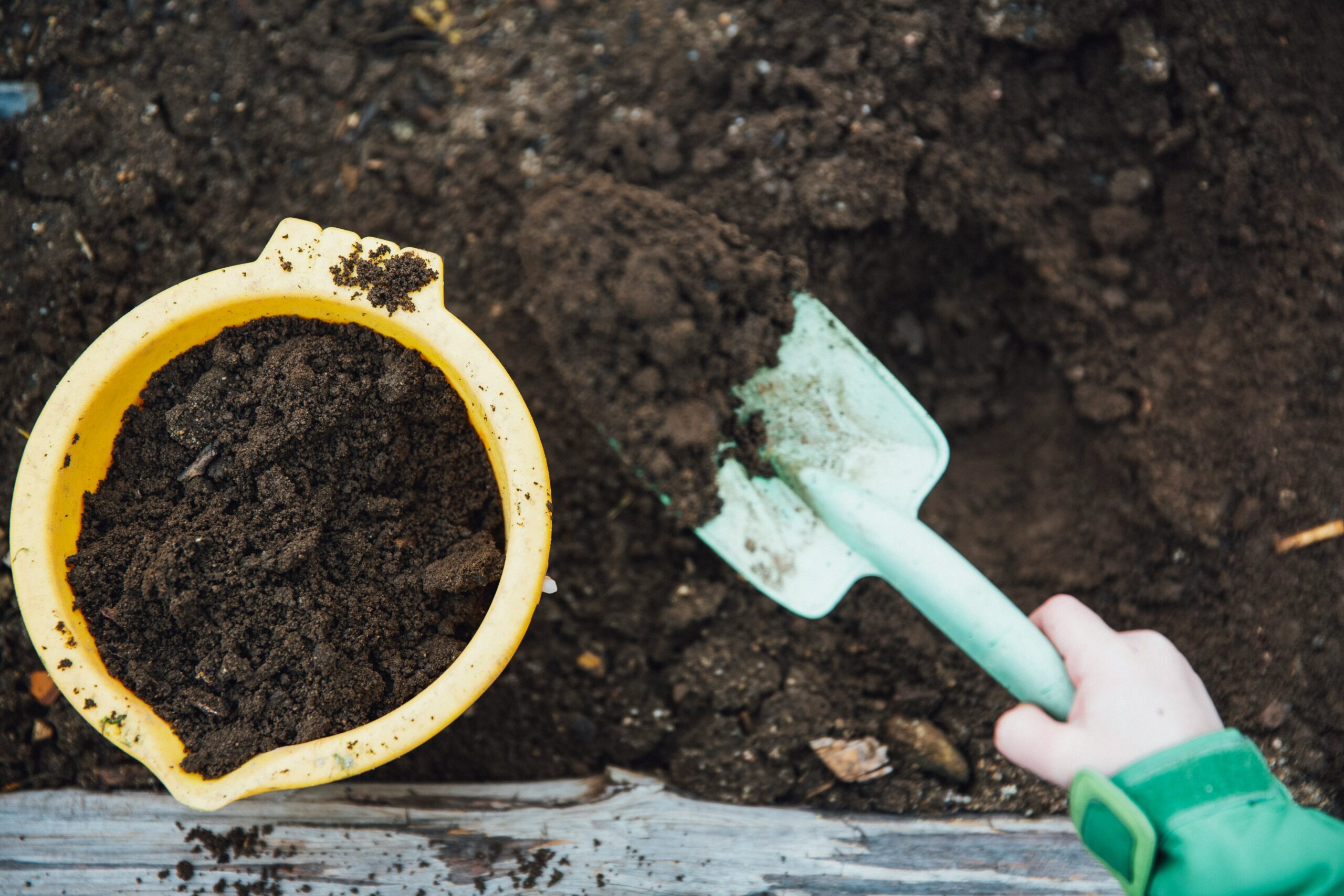What Are Chemical Tests That Can Be Run on Soils? Essential Soil Analysis Methods Explained
When I think about healthy plants and strong crops, I know it all starts with the soil beneath our feet. Soil isn’t just dirt—it’s a complex mix of minerals, organic matter, and nutrients that support life. But how do I really know what’s in my soil or what it might be missing?
That’s where chemical tests come in. These tests unlock the secrets hidden in the ground, helping me understand things like pH balance, nutrient levels, and even potential contaminants. By running a few simple chemical tests, I can make smarter decisions about fertilizers, amendments, and how to get the most out of my land.
Overview of Soil Chemical Testing

Soil chemical testing provides precise data on soil composition using laboratory methods. I use these tests to quantify specific elements and compounds in soil samples. Key chemical indicators include pH, macronutrients, micronutrients, cation exchange capacity (CEC), salinity, and potentially harmful contaminants such as heavy metals.
Common Soil Chemical Tests
Chemical soil analysis covers multiple parameters. I consider the following tests standard for evaluating soil health:
- pH Measurement: Determines hydrogen ion concentration. pH affects nutrient availability. For example, most crops grow best when soil pH is between 6.0 and 7.5.
- Nutrient Analysis: Detects levels of nitrogen (N), phosphorus (P), and potassium (K), as well as secondary nutrients like calcium (Ca), magnesium (Mg), and sulfur (S). Testing for micronutrients such as zinc (Zn), iron (Fe), manganese (Mn), copper (Cu), and boron (B) is also common.
- Cation Exchange Capacity (CEC): Reveals soil’s ability to hold and exchange positively charged ions, directly linked to soil fertility.
- Salinity Testing: Measures soluble salts. High salinity disrupts plant growth, common in irrigated fields.
- Contaminant Screening: Identifies heavy metals (like lead or arsenic) and persistent organic pollutants.
Key Soil Test Parameters
| Chemical Parameter | Test Method | Typical Range for Healthy Soil |
|---|---|---|
| pH | Electrometric (pH meter) | 6.0–7.5 |
| Nitrogen (N) | Kjeldahl or colorimetric | 20–50 ppm |
| Phosphorus (P) | Olsen, Bray, or Mehlich | 15–30 ppm |
| Potassium (K) | Flame photometry | 80–200 ppm |
| Cation Exchange Capacity | Ammonium acetate extraction | 10–40 meq/100g |
| Salinity (EC) | Conductivity meter | <1.0 dS/m |
| Heavy Metals (e.g., Pb) | ICP-MS, AAS | <85 mg/kg (Pb) |
Routine lab-based soil tests support agricultural management by identifying nutrient imbalances and contamination risks. I interpret these results before recommending any corrective actions.
Common Chemical Tests for Soil Analysis
I conduct soil chemical tests to determine key characteristics for making precise land management choices. Accurate results support optimal crop health and efficient fertilizer use.
pH Measurement
I measure soil pH to identify the soil’s acidity or alkalinity. The pH range influences nutrient availability and chemical reactions within the soil. I use a calibrated digital pH meter or colorimetric test kit for this analysis. If pH measures below 5.5 or above 7.5, reduced nutrient uptake occurs. The table below summarizes typical soil pH values:
| Soil pH | Classification | Effect on Crops |
|---|---|---|
| Below 5.5 | Strongly acidic | Limits growth, toxic elements can increase |
| 5.6 – 6.9 | Slightly acidic | Optimal for most plants |
| 7.0 | Neutral | Suitable for most crops |
| Above 7.5 | Alkaline | Micronutrient deficiencies may appear |
Nutrient Analysis (NPK)
I analyze soil for essential macronutrients, focusing on nitrogen (N), phosphorus (P), and potassium (K). I collect representative soil samples, then submit them for laboratory analysis using colorimetric, spectrophotometric, or extraction methods. High or low NPK values can signal required fertilizer adjustments. The table below outlines target nutrient ranges:
| Nutrient | Optimal Range (mg/kg) | Deficiency Symptoms |
|---|---|---|
| Nitrogen | 20–40 | Poor growth, pale leaves |
| Phosphorus | 15–30 | Purple leaves, weak roots |
| Potassium | 80–200 | Scorched leaf edges, weak stems |
Salinity and Electrical Conductivity Tests
I use electrical conductivity (EC) tests to measure soluble salt content in soils. If EC values exceed 4 dS/m, yields for sensitive crops decrease. I detect salinity issues that impact plant growth and water absorption, especially in arid climates. EC meters provide fast readings after mixing soil in deionized water.
| EC Value (dS/m) | Soil Salinity | Impact on Plants |
|---|---|---|
| Below 2 | Non-saline | Normal growth |
| 2 – 4 | Slightly saline | Sensitive crops affected |
| Above 4 | Saline | Growth suppression |
Organic Matter Content
I estimate organic matter to evaluate soil fertility and structure. Loss on ignition or wet chemical oxidation methods provide quantitative results. If organic content drops below 2%, soil structure, moisture retention, and nutrient cycling decrease. Typical arable soils fall between 2% and 6% organic matter.
Cation Exchange Capacity (CEC)
I measure CEC to determine soil’s ability to hold positively charged nutrients (cations) like calcium, magnesium, and potassium. Laboratory ammonium acetate extraction or barium chloride procedures give CEC readings in centimoles per kilogram (cmol/kg). If CEC readings are below 10 cmol/kg, nutrient retention is limited, especially in sandy soils. Soils with higher CEC, above 20 cmol/kg, store and supply nutrients more effectively.
Specialized Chemical Tests

Specialized chemical tests provide advanced insights into soil composition for agricultural management. I use these tests to pinpoint specific soil conditions that basic assessments can’t reveal.
Heavy Metal Screening
Heavy metal screening identifies contaminants like lead, arsenic, cadmium, and mercury in soils. I rely on atomic absorption spectroscopy (AAS) or inductively coupled plasma mass spectrometry (ICP-MS) to measure these metals at parts-per-million (ppm) sensitivity. Elevated metal concentrations, such as lead above 400 ppm (U.S. EPA guideline), signal contamination that could harm crops or endanger food safety. I compare results to regulatory standards to inform remediation decisions.
| Heavy Metal | Detection Method | Typical Safe Limit (ppm) | Regulatory Reference |
|---|---|---|---|
| Lead (Pb) | AAS, ICP-MS | < 400 | US EPA |
| Arsenic (As) | ICP-MS, AAS | < 20 | FAO/WHO |
| Cadmium (Cd) | ICP-MS, AAS | < 1 | EU Soil Guidelines |
| Mercury (Hg) | CV-AAS, ICP-MS | < 5 | US EPA |
Soil Acidity and Alkalinity Buffers
Soil acidity and alkalinity buffer tests quantify the soil’s resistance to pH shifts. I use buffer solutions and titration methods to calculate the lime requirement for acid soils or sulfur requirement for alkaline soils. High buffering capacity means minor fertilizer applications won’t notably change pH. I interpret buffer test results to recommend amendments in tons/acre for optimal pH balance.
| Soil Type | Buffer Test Used | Lime Requirement Example (tons/acre) |
|---|---|---|
| Sandy Loam | SMP Buffer Method | 1.0–1.5 |
| Clay | Adams-Evans Buffer | 2.0–2.5 |
| Organic | Shoemaker Buffer | 2.5–3.0 |
Micronutrient Analysis
Micronutrient analysis measures levels of essential trace elements like iron (Fe), manganese (Mn), zinc (Zn), copper (Cu), boron (B), and molybdenum (Mo). I use extraction solutions such as DTPA or Mehlich-3 and run the samples through ICP-OES for precise quantification. Deficient micronutrient concentrations limit plant growth; for example, DTPA-extractable zinc below 1 ppm signals deficiency in most crops. I use findings to adjust fertilizer mixes for balanced micronutrient supply.
| Micronutrient | Extraction Method | Deficiency Threshold (ppm) | Impacted Crops Examples |
|---|---|---|---|
| Zinc (Zn) | DTPA, Mehlich-3 | < 1.0 | Corn, beans, cotton |
| Iron (Fe) | DTPA, Mehlich-3 | < 4.5 | Soybeans, turfgrass |
| Copper (Cu) | DTPA, Mehlich-3 | < 0.3 | Wheat, oats, barley |
| Manganese (Mn) | DTPA, Mehlich-3 | < 2.0 | Spinach, legumes |
How to Interpret Soil Test Results

I use soil test reports to understand soil chemistry, nutrient status, and contamination levels. Each section of a soil test report links to specific chemical components, with numeric values guiding targeted soil management.
Interpreting pH Data
I read soil pH data to assess the acidity or alkalinity of the soil. Values below 6.0 indicate acidic conditions, which limit nutrient uptake in crops like alfalfa and beans. Readings above 7.5 signal alkaline conditions, often restricting the availability of elements such as iron or zinc.
| pH Value Range | Soil Reaction | Common Crop Suitability |
|---|---|---|
| < 6.0 | Acidic | Blueberries, potatoes |
| 6.0–7.5 | Neutral | Corn, soybeans, vegetables |
| > 7.5 | Alkaline | Barley, sugar beets |
Evaluating Macronutrient Levels
I confirm soil fertility by checking macronutrient concentrations for nitrogen (N), phosphorus (P), and potassium (K). Low or high results for any macronutrient require changing fertilizer applications.
| Nutrient | Low (ppm) | Optimum (ppm) | High (ppm) |
|---|---|---|---|
| Nitrogen | <10 | 10–25 | >25 |
| Phosphorus | <15 | 15–30 | >30 |
| Potassium | <100 | 100–200 | >200 |
Assessing Micronutrient Status
I check micronutrients—such as iron, manganese, zinc, and copper—to identify deficiencies that impact specific crops. For example, corn shows stunted growth if zinc drops below 1.0 ppm.
| Element | Deficiency Threshold (ppm) | Crops Affected |
|---|---|---|
| Iron | <4.5 | Soybeans, turfgrass |
| Manganese | <2.0 | Beans, oats |
| Zinc | <1.0 | Corn, pecan |
| Copper | <0.5 | Wheat, lettuce |
Understanding Cation Exchange Capacity (CEC)
I use CEC values to estimate the soil’s capacity to retain nutrients. Sandy soils show CEC less than 10 meq/100g, making them less fertile and more prone to leaching. Clay-rich soils, reading above 20 meq/100g, hold more nutrients.
| CEC (meq/100g) | Soil Type | Nutrient Retention |
|---|---|---|
| <10 | Sandy | Low |
| 10–20 | Loamy | Moderate |
| >20 | Clay | High |
Interpreting Salinity and Contaminant Results
I identify salinity by electrical conductivity (EC). EC above 4 dS/m stresses most vegetable and fruit species. For contaminants, lab results compare measured concentrations to regulatory standards from agencies like the EPA or FAO.
| Parameter | Threshold | Impact Example |
|---|---|---|
| EC (dS/m) | >4.0 | Reduced fruit quality |
| Lead (mg/kg) | >300 | Unsafe for leafy greens |
| Arsenic (mg/kg) | >20 | Health risks in grains |
Summary Table: Key Soil Chemical Test Interpretations
| Test Type | Critical Value | Management Action |
|---|---|---|
| pH | <6.0 or >7.5 | Apply lime or sulfur |
| Nitrogen | <10 ppm | Apply nitrogen fertilizers |
| Zinc | <1.0 ppm | Use zinc-based amendments |
| CEC | <10 meq/100g | Increase organic matter |
| EC | >4.0 dS/m | Improve irrigation management |
| Lead | >300 mg/kg | Avoid food crop cultivation |
I apply these interpretations to match specific nutrient needs, amendment recommendations, and risk mitigation strategies for both agricultural and urban soils.
Importance of Soil Chemical Testing in Agriculture and Environment
Soil chemical testing offers essential insights into nutrient availability, contamination status, and overall soil health. By analyzing pH, nutrient levels, and contaminants, I identify limiting factors for plant growth and prevent crop failures. Reliable chemical test results help tailor fertilizer application, saving costs and avoiding overuse that could leach nutrients or pollute water.
Nutrient and contaminant data also inform local environmental management. Tests identifying excess nitrogen or phosphorus help me reduce runoff that causes algal blooms in nearby bodies of water. Detecting heavy metals or persistent organic pollutants minimizes the risk of food chain contamination and ecosystem harm across agricultural landscapes.
Accurate soil chemical information supports sustainable land management. Regular testing guides my crop rotations, amendments, and conservation efforts, maintaining productivity while protecting the environment.
Common Soil Chemical Indicators and Interpretation Thresholds
| Soil Chemical Indicator | Optimal Range | Environmental Impact |
|---|---|---|
| pH | 6.0–7.5 | Below 6.0: Nutrient lockout; Above 7.5: Deficiencies |
| Nitrogen (N, mg/kg) | 20–50 | Excess: Water pollution; Deficiency: Poor growth |
| Phosphorus (P, mg/kg) | 10–30 | Excess: Eutrophication; Deficiency: Low yields |
| Potassium (K, mg/kg) | 80–200 | Deficiency: Reduced resistance to stress |
| CEC (cmol/kg) | 10–25 | Low CEC: Poor nutrient retention |
| Salinity (dS/m) | < 2 | > 4: Crop toxicity |
| Lead (Pb, mg/kg) | < 70 | Above: Toxic to plants and animals |
Regular use of these soil chemical benchmarks means I maintain high productivity and also safeguard water, food, and natural environments from pollution and toxicity.
Conclusion
With the right chemical tests I can unlock a wealth of information about my soil’s health and productivity. These insights let me make smarter decisions for fertilizer use and environmental stewardship. By staying proactive with soil testing I’m not just supporting stronger crops—I’m also protecting my land and the surrounding ecosystem for years to come.
Frequently Asked Questions
What is soil chemical testing?
Soil chemical testing involves analyzing soil samples in a laboratory to determine pH, nutrient levels, cation exchange capacity (CEC), salinity, and potential contaminants. These tests provide valuable data about soil health and fertility, helping guide effective crop management and fertilizer use.
Why is soil pH important for plant growth?
Soil pH affects how nutrients are absorbed by plants. If the pH is too high (alkaline) or too low (acidic), essential nutrients may become unavailable, impacting plant productivity and health. Maintaining optimal pH ensures plants access the nutrients they need.
How often should soil chemical tests be performed?
Routine soil chemical tests are recommended every 2–3 years, or more frequently if you notice poor plant growth or make significant changes to fertilization or crop rotations. Regular testing helps monitor soil health and makes it easier to address issues early.
What are common chemical indicators in soil testing?
Common indicators include soil pH, macronutrients (nitrogen, phosphorus, potassium), micronutrients (iron, zinc, manganese, etc.), cation exchange capacity (CEC), salinity, and contaminants like heavy metals (lead, cadmium, arsenic, mercury).
How can soil test results guide fertilizer use?
Soil test results reveal nutrient deficiencies or excesses, allowing you to apply the right amount and type of fertilizer. This avoids over-fertilization, saves money, prevents water pollution, and supports sustainable farming.
What specialized tests can detect soil contaminants?
Advanced methods like atomic absorption spectroscopy (AAS) and inductively coupled plasma mass spectrometry (ICP-MS) are used to detect heavy metal contaminants, such as lead or arsenic, ensuring soil safety for crops and food production.
What are buffer pH tests, and why are they important?
Buffer pH tests estimate how resistant soil is to pH changes, helping determine the correct amount of lime or acidifying amendments needed to adjust soil pH to optimal levels for healthy plant growth.
How do micronutrient tests benefit soil management?
Micronutrient tests identify deficiencies in essential trace elements like iron, copper, and zinc. Proper management of these micronutrients prevents stunted growth, poor yield, and plant health problems.
Can soil chemical testing help protect the environment?
Yes, soil chemical testing can prevent nutrient runoff, reduce water pollution, limit toxic contaminant exposure, and promote sustainable agricultural practices. It guides land management decisions to keep both crops and ecosystems healthy.
What are optimal ranges for key soil chemical indicators?
Optimal ranges vary but typically include pH (6.0–7.5), nitrogen (20–50 mg/kg), phosphorus (15–30 mg/kg), and potassium (100–200 mg/kg). Detailed ranges for additional nutrients and contaminants can be found in the article’s reference table.
